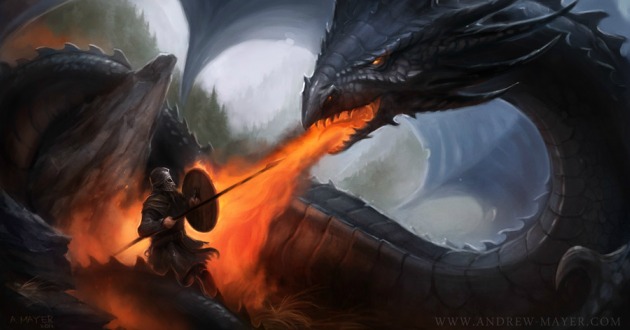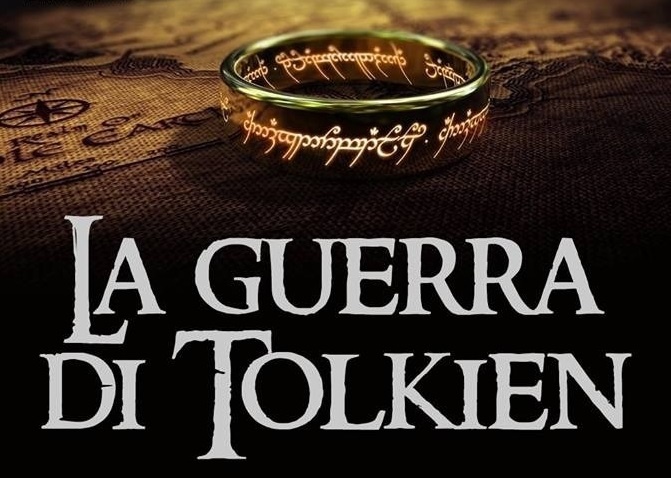“Five hundred mistakes per page throughout 1500 pages“
All lovers of Tolkien and Fairy-stories are aware that without monsters fairy-stories have little value. Tolkien himself declared it during his conference on Beowulf in 1936 (Beowulf: the Monsters and the Critics): this was exactly the meaning of monsters in ancient works. They represent the challenges mankind has to face with courage, because this is what we are: not gods, nor giants: just men, and this is the real challenge, for us and for Beowulf.

Did princess Alliata translate Tolkien well? The answer is no, according to Ottavio Fatica, new translator of The Lord of the Rings who was chosen by Bompiani (who publishes Tolkien’s boosk in Italy) under suggestion of dell’Associazione Italiana Studi Tolkieniani (AIST, Italian Association for Tolkien Studies, an association, based in Rome, who claims to be the national main reference for Tolkien matters. It is not recognised by the Tolkien Society, as the only official Italian Tolkien Society is STI, Società Tolkieniana Italiana, founded in 1994 and still alive and kicking) as claimed on their official media. He asserted it in an interview given to Repubblica and wholly and proudly published by AIST on april 29, 2018.
To him it is evident that Alliata’s translation has been “an improvised adventure”: “five hundred mistakes per page throughout 1500 pages. No paragraph is without lacunae or mistakes.” Any professional translator knows that princess Alliata did well to send a cease and desist letter to the publisher and to sue the one who pronounced such words. We mean to find out: is this translation really such a disaster?
In her speech of the 17 January at the Italian Senate, Alliata explained how Tolkien wanted his work to be translated, commenting on the author’s letter 171. Thus the princess showed how Tolkien himself was in some way accused of making five hundred mistakes per page throughout 1500 pages. As a matter of fact, in December 1954 Hugh Brogan wrote to him, criticizing the archaisms in the Lord of the Rings with special reference to The Two Towers and the chapter ‘The King of the Golden Hall’, calling them ‘tushery’, by which he meant that the archaisms of the text made for poor writing.
Tolkien Tolkien never answered that letter thoroughly, not even when Brogan wrote again to apologize². In his letters edited by Humphrey Carpenter and Christopher Tolkien, there’s a drafted answer in letter 171, which was never sent. He did answer him explaining that his use of archaisms ‘would take too long to debate’, thus postponing the explanation until their future meeting. Nevertheless the draft is useful because Tolkien tells us that the archaisms are there by necessity to let the characters of The Lord of the Rings speak as they would have really spoken. Thus, it would have made no sense if Théoden had said to Gandalf ‘you don’t know your own skill as a doctor’, instead of ‘You do not know your own skill in healing’.
So, does the translation by Vittoria Alliata di Villafranca correspond to the definition of i “tushery”? Princess Alliata tells us that the ‘mistakes’ reported by the Associazione Italiana Studi Tolkieniani on their website and which O. Fatica refers to are mostly of two types: typos never corrected by the editor Quirino Principe3, and translation choices, which are not, therefore, to be considered as “errors”.
Moreover, with regard to the particular disapproval O. Fatica expresses in his interview to Repubblica, the use of double adjectives is due to a translation choice with deep roots: the translated text had to be clear for everyone, universally understandable and respectful of the original, and so Alliata chose to use Dante’s dittology and hendiadys. She made this choice so that the translation could replicate the medieval depth, antiquity and beauty of the original, and, at the same time, so that it could be readily understood by the young people of her time, who had studied Dante and his style and language at school. Not to mention that, by choosing Dante as a stylistic example, she unknowingly did something Tolkien would have liked. As a matter of fact, she could not know that Tolkien loved Dante and that he had been a member of the Oxford Dante Society for ten years, a fact that was established by Oronzo Cilli in his book Tolkien e l’Italia (English translation not available yet).
The funny thing is, dunque, O. Fatica really considers Alliata’s translation to be ‘tushery’, which explains why, according to him, each page contains more mistakes than words. Unfortunately, Tolkien’s very texts require brave and exact philological choices to be translated, as is clear from letter 171.
² H. Carpenter, C. Tolkien, Letters. Letter 171”.
3 The first edition of The Lord of the Rings in Italy was published by l’Astrolabio in 1967, and it had to be a three volume edition, but as sales were very low, they decided to stop the project and only The Fellowship of the Ring was published. Mr Ubaldini, then owner of Astrolabio, sold all translation rights to Rusconi, who published the whole Lord of the Rings in 1970 and kept the rights for the following 30 years until they were given to Bompiani, the actual publisher of all Tolkien’s works in Italy (editor’s note).


